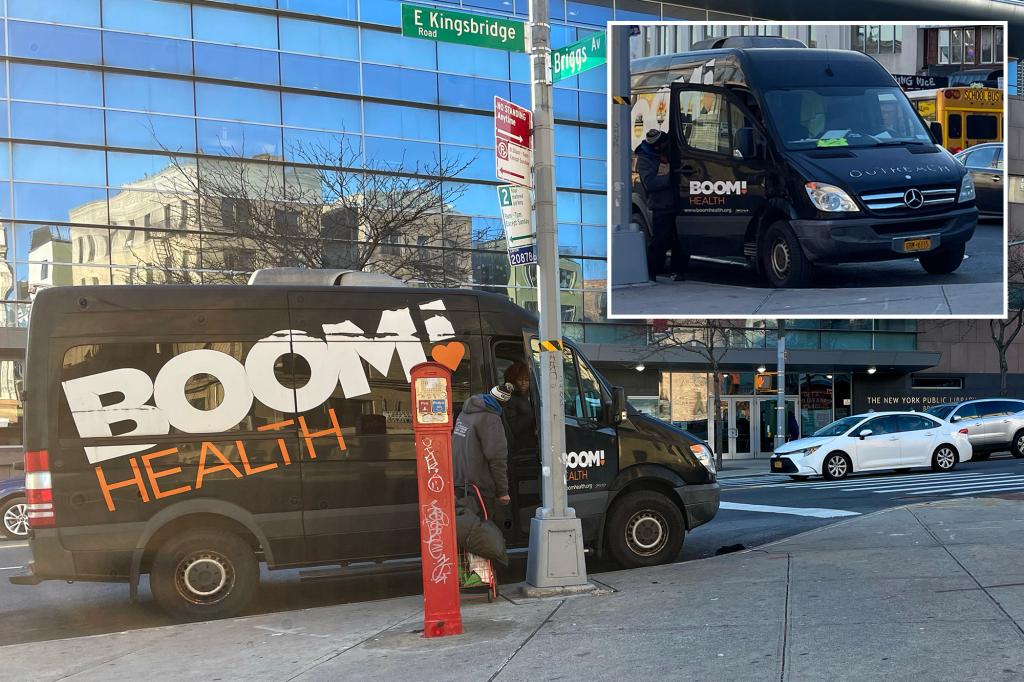The Bronx Library Center, a vital community resource for children and adults alike, has become the unlikely epicenter of a heated debate concerning a city-sponsored needle exchange program operating directly outside its doors. Local residents, along with Bronx Councilman Oswald Feliz, have voiced strong opposition to the program’s location, citing concerns about public safety, the potential exposure of children to drug paraphernalia and illicit drug use, and the overall degradation of the neighborhood environment. While acknowledging the public health rationale behind needle exchange programs in mitigating the spread of diseases like HIV and hepatitis among intravenous drug users, they argue that placing such a program in front of a children’s library is counterproductive and irresponsible. The jarring juxtaposition of a children’s library and a mobile needle exchange van underscores the complex and often contentious intersection of public health initiatives and community concerns.
The primary objection raised by residents and Councilman Feliz revolves around the perceived normalization of drug use that the visible presence of the needle exchange van creates, particularly for children. Witnessing individuals openly injecting drugs or finding discarded needles in the vicinity of the library sends a troubling message and potentially desensitizes young people to the dangers of substance abuse. Furthermore, the increased presence of drug users attracted to the area has reportedly led to instances of erratic behavior inside the library itself, creating a sense of insecurity and discomfort for patrons, especially families with children. This, they argue, undermines the library’s role as a safe and welcoming space for learning and community engagement.
The concern over discarded needles is not merely hypothetical. Residents report frequently encountering used syringes on the sidewalks and even within the library’s restrooms. This poses a significant health risk, particularly to children who might unknowingly come into contact with contaminated needles. The fear of accidental needle sticks and potential exposure to bloodborne diseases adds another layer of anxiety for parents and caregivers who frequent the library with their children. The presence of discarded needles transforms a public space meant for education and enrichment into a potential health hazard, further fueling the community’s opposition to the program’s location.
Councilman Feliz, echoing the sentiments of his constituents, has formally expressed his outrage and frustration to the city’s Health Department. In a letter, he detailed the negative consequences of the program’s placement, citing instances of open drug use, discarded needles, and erratic behavior within the library. He characterized the decision to locate the needle exchange van in front of a children’s library as “outrageous, irresponsible, and difficult to comprehend,” particularly from a health department that prioritizes public safety. His letter serves as a formal articulation of the community’s concerns and demands for a more suitable location for the program.
The city’s rationale for placing the needle exchange van at this particular location remains unclear. While the program aims to provide harm reduction services, including access to clean syringes, naloxone, and disease testing, the choice of location appears to have overlooked the potential negative impact on the surrounding community. Proponents of harm reduction argue that such programs are crucial for reducing the spread of infectious diseases and offering a pathway to treatment for individuals struggling with addiction. However, the efficacy of these programs is undermined when their implementation creates new problems, such as increased public drug use and the normalization of drug paraphernalia in areas frequented by children.
The situation at the Bronx Library Center highlights the inherent challenges in balancing public health initiatives with community well-being. While needle exchange programs undoubtedly serve a vital purpose, their placement requires careful consideration of the surrounding environment and potential impact on local residents. The community’s concerns regarding the normalization of drug use, the safety of children, and the overall degradation of the neighborhood environment cannot be ignored. A more thoughtful and community-engaged approach is needed to ensure that harm reduction efforts are implemented in a way that benefits both the target population and the broader community. Finding a location that addresses the needs of drug users while minimizing the negative impact on families and children is crucial for the success of such programs.










